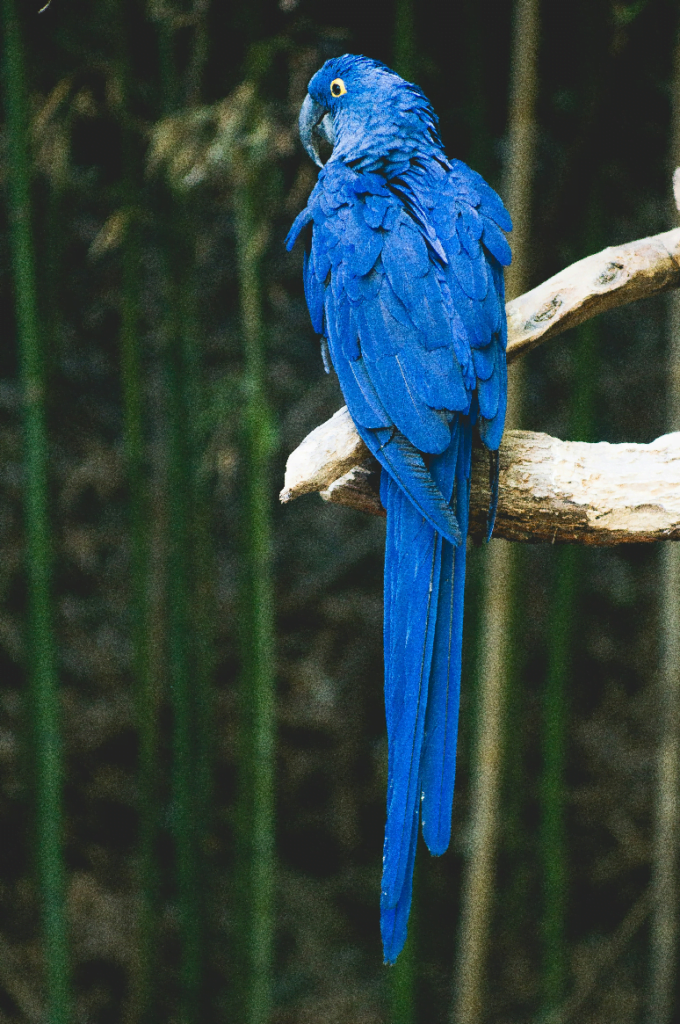The parrot family

The hyacinth macaw, or hyacinth macaw, is a parrot native to central and eastern South America. With a length of about one meter it is longer than any other species of parrot. It is the largest macaw and the largest flying parrot species; the flightless kākāpō of New Zealand outweighs it at up to 3.5 kg.
Less than 7,000 Hyacinth macaw still exist in the wild, while three other related species of macaw are extinct or believed to be extinct.
Hyacinth macaws eat mostly fruit, nuts, seeds and nectar.
Seeds and nuts: This can be anything from the seeds of vegetables to fruits and every type of nut. However, the favourite seeds and nuts of Macaws are sunflower seeds, peanuts, cashew nuts and almonds. Macaws generally like any seed with a lot of fatty content.
Hyacinth macaws can be found in parts of Brazil, eastern Bolivia and northeastern Paraguay. Unlike most parrots that prefer tropical rain forest habitats, hyacinth macaws prefer lightly forested areas such as palm swamps and flooded grasslands.
Larger birds of prey, snakes, and monkeys are some of the macaw’s main predators.
Macaws are diurnal, so they don’t fly at night, but they prefer the cool temperatures of the morning for travel and rest during the early afternoon when the sun is high. They travel over large areas throughout the day, mostly in the lowland rain-forest. There are 17 species of macaws, which can be found throughout Central and South America. In addition to traveling long distances daily to feed, macaws make even longer journeys between seasons as the fruit availability varies among regions and habitat types.



